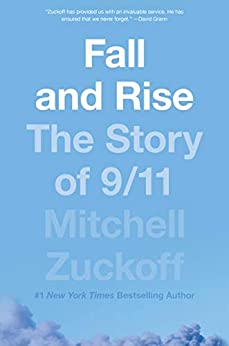More on this book
Community
Kindle Notes & Highlights
A Gallup poll17 taken on September 10, 2001, found that fewer than 1 percent of Americans considered terrorism to be the nation’s No. 1 concern.
Federal rules in place in the summer of 2001 allowed airline passengers to carry knives with blades shorter than four inches.
In 2001, the FAA employed only thirty-three such marshals,45 a sharp drop from the 1970s, and they were assigned exclusively to international flights considered to be high risk. That was the case despite a statement published by the FAA just eight weeks before September 11 in the Federal Register: “Terrorism can occur46 anytime, anywhere in the United States.
On September 11, 2001, the FAA’s “no-fly list” included a grand total of twelve names.25 By contrast, the State Department’s so-called TIPOFF terrorist watchlist included sixty thousand names.
Earlier in the summer, an FBI agent in Phoenix named Kenneth Williams had written a memo27 to his superiors in Washington expressing concern about Middle Eastern men with ties to extremists receiving flight training in the United States.
As the skies cleared, the FAA and NEADS established an open conference call that would be named the Domestic Events Network. From that moment on, it would operate around the clock, seven days a week, never to be interrupted to this day. As one investigator put it, its creation acknowledged the fact that the FAA never notified the nation’s military air defenders at NORAD, NEADS, or anywhere else of “any of the four hijacked flights57 in time to enable them to respond to the threat before the planes crashed.”
All told, the design and structural innovations lowered the buildings’ weight, sped the pace of construction, dropped the cost of materials, and increased the anticipated return on what became a $1 billion investment, more than triple the initial cost estimates. Yet those and other advances came with an unwanted, largely overlooked price: they collectively made the Twin Towers of the World Trade Center more susceptible to fire, especially when compared with older buildings whose exteriors were clad in fire-resistant masonry, whose floors were divided into compartments like the hull of a ship,
...more
The old code would have mandated six emergency exit stairwells in each tower. The Port Authority interpreted the new rules as requiring only three stairwells per tower. However, even under the new code, each tower should have included at least a fourth stairwell,12 to accommodate visitors to public spaces on the highest floors. Also, fire safety experts generally urge that stairwells in tall buildings be spaced as far apart as possible. But in each of the Twin Towers, the three stairwells were bunched relatively close to one another in the central core. That left them collectively more
...more
Amid the chaos, overwhelmed 9-1-1 operators never learned that Stairwell A remained relatively intact above the South Tower impact zone, at least to the 91st floor and possibly higher. No evidence exists that any person who called 9-1-1 from above the impact zone was urged to seek out Stairwell A3 as a potential path to survival.


